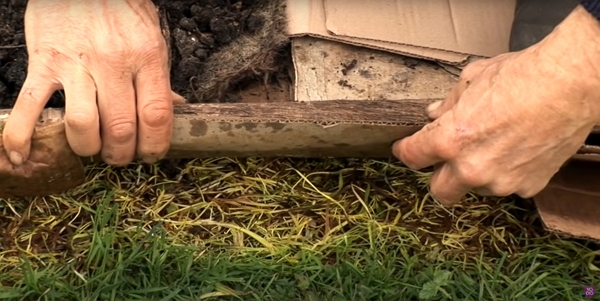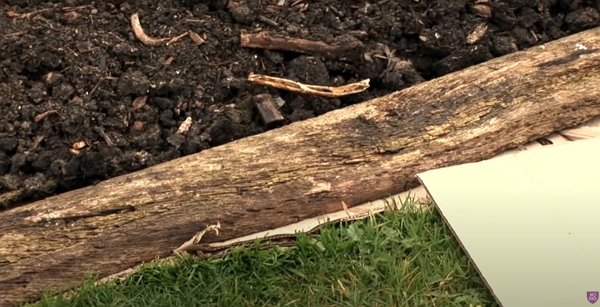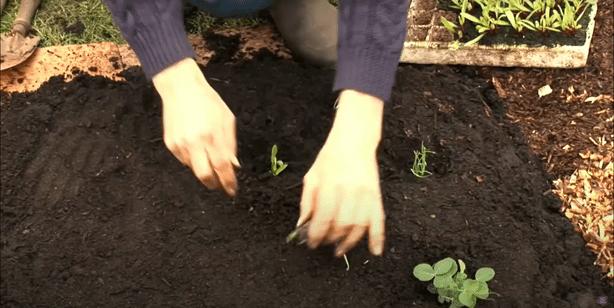In this vlog, Charles explains how to start No Dig.
Thanks to Charles Dowding for sharing his wisdom and knowledge! I wrote the following notes watching the video published on Charles Dowding’s channel. You can watch it using this YouTube link.
Definition of mulch
Mulch can be anything that covers the surface you apply it to keep the light out.
Where to start the No Dig bed
A very weedy area, a lawn are good candidates for a no dig bed.
What do you need
You will need:
- cardboard, because it’s the cheapest covering material
- wool
- compost
If you don’t have any weed, you’re rare lucky person. Most of us will start from a weedy patch of land.
In the following notes, we will see how Charles will free us so much time in our gardening.
Weeding bores and tires you and all the time used to weed isn’t the time to grow strong and healthy vegetables.
And Charles’s method leaves the soil undisturbed, which is essential for a life-rich soil.
The weeds aren’t pulled, they stay there and eventually, they give up growing.
Charles put it nicely: if you try to dig out the weed, they will be hurt but they will have the will to grow more and you will harm your soil.
About the cardboard
You can find it easily for free. But:
- use a brown cardboard, not the shiny ones that contain plastic
- remove the tape and staples, if any
- avoid cardboard with ink, unless you’re sure it’s vegetable-based ink.
How to build a No Dig bed
The first application
You will need to delimit your bed area and the pathways.
Then apply a layer of cardboard over it, making sure no gap exists that will let the weeds through. Indeed, the weeds will find their way if you’re wary about the cardboard position.
It’s important to make sure the cardboard overlap generously to prevent light to reach the craving weeds underneath.
What compost to use
Fresh manure isn’t recommended. Even well-rotted cow manure doesn’t perform as well as his homemade compost, Charles finds.
Remember the goal is to be able to sow in straight away.
You can use:
- Green waste compost: it comes from general garden waste, debris, prunings, etc.
- This compost usually has a darker color and its performance isn’t quite as good as homemade compost
- Homemade compost: it comes from general garden waste, fibers, prunings, wood, etc.
- It doesn’t look as fine as the green waste compost. Also, you don’t need to sift it.
- Mushroom compost: it needs to be well decomposed. Charles didn’t say much about how it’s made, so I ask in the vlog’s comments section.
Spread a 10 cm layer of compost on top of the cardboard.
Don’t hesitate to firm the compost with your feet. It does need firmness, not loose nor compact. But the great thing about compost is that it’s never compact.
To contain the compost in the bedding area, you can use wood framing.
The issue that can arise is getting hold of a lot of compost. It’s difficult, but read in my other notes I took from Charles’s videos on the topic of compost.
You will need to hunt for the materials in your neighborhood. It will surprise you how much waste people will be delighted to give away for free.
Pathways around the beds
The easiest and cheapest way to do it’s to use woodchips, decomposed or not, it will feed the soil life.
They will dig for you but in a much more gentle manner, keeping the carbon dioxide in the ground, whereas when you dig, you release carbon dioxide…
Maintain an edge
An edge is anything that covers about 20 cm extra more space than your bed is taking.
It will help to keep the grass to jump the rich soil of your bed.
You can use small wood beams and cardboard as shown below.
You need up to three or four cardboard applications
When the weeds start to grow through the first layer of cardboard on the pathways, it’s time to pull the weeds, if it’s easy, and apply another layer of cardboard.
Always make sure to overlap the piece of cardboard.
You will need to apply each layer about every six weeks unless the weeds have died.
Tire the weeds by removing the small shoots
It’s possible to remove all weeds with time and patience.
Patrol around the garden where you put the cardboard, pull out the young shoots of weeds and the parent root will die at one point.
It can take a few years, however, to tire some of the strongest weeds like the bindweeds.
It’s achievable and you need to be patient.
Using soil on a new bed
Charles doesn’t use soil when he builds a new bed because vegetables grow much better in compost.
Use propagation to give the best start to seedlings
Charles recommends not to sow directly in the ground because it’s vulnerable.
Propagation means sowing the seed or multi-sown seeds in a module until the seedling is big enough to be transplanted.
Charles has severable vlogs on the topics, check out the propagation tag. These notes are a good starting point from a more recent vlog.
Planting in a No Dig bed
Planting is simple since the compost is easy to dig into using two fingers.
The demonstration (available at minute 20:50 in the vlog) above showcases how simple it is, requiring no tools.
About spacing, Charles suggests 30 cm between each plant for beetroots. I’ve come across many vlogs so far on spacing. But I will certainly do, check out the tags when you read this, I may have a tag Spacing seedlings or something similar.
Also, remember that you will be able to do succession planting:
- planting lettuce after the peas,
- planting beetroots after the spring onions
- etc.
A comment about a few vegetables
Root vegetables transplant well, unlike you may have heard.
Again, where does this belief come from? Is it because of the dig method not working well showing? Isn’t the problem in the action of transplanting but rather because of the method used to grow the vegetables?
Also, birds tend to eat broccoli, so you’ll need to protect them with nets.
Kale is a great vegetable, to be sown in May and transplanted in June. It will give you food in the winter months and even early spring.
Conclusion
Keep thinking ahead, have seedlings ready for the months to come, even if it’s winter.
You want to keep eating from your garden all year long ultimately.
You will need to start small, though. I took notes on the topic in a vlog by Huw Richards. He explains the simple way to becoming self-sufficient in food. Have a read.
Think about the storage of your vegetables. Garlic and onions harvested in the summer will stay indoors.
Finally, eating home-grown produce is also great for you because it contains a lot of microbes very beneficial to your digestive track.



